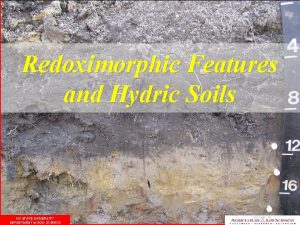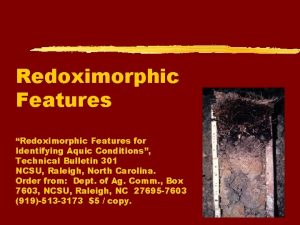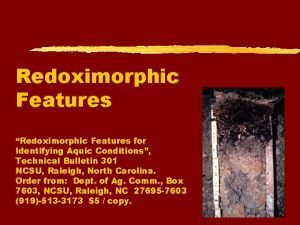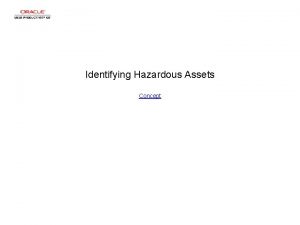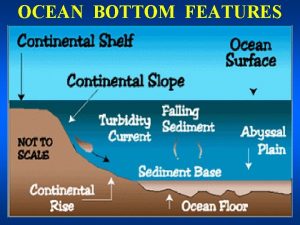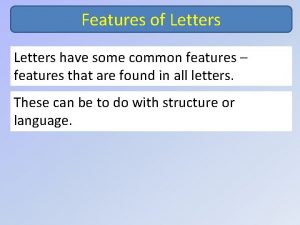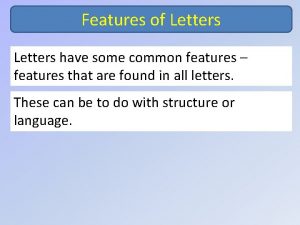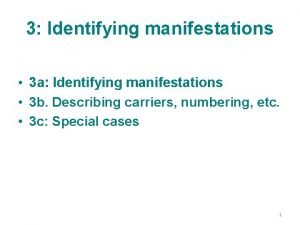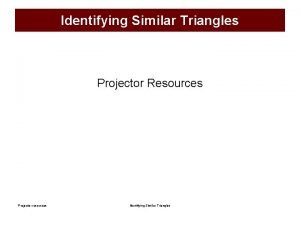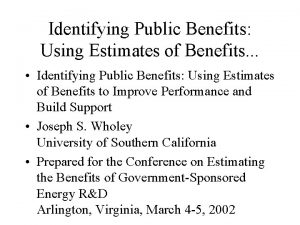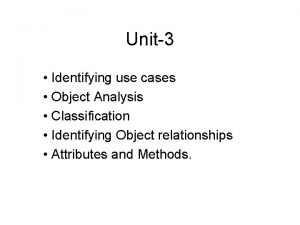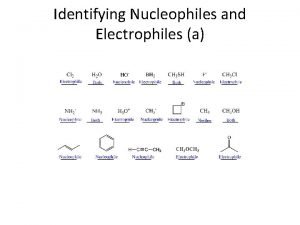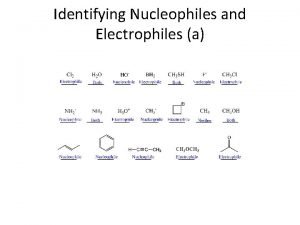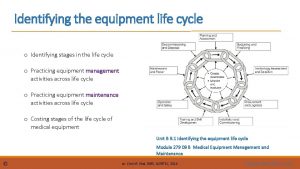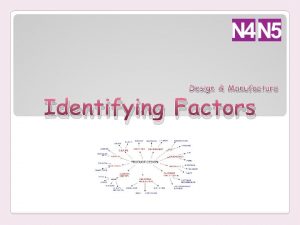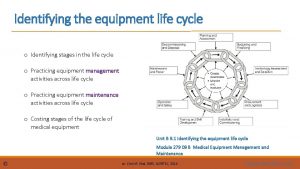Redoximorphic Features Redoximorphic Features for Identifying Aquic Conditions

































- Slides: 33

Redoximorphic Features “Redoximorphic Features for Identifying Aquic Conditions”, Technical Bulletin 301 NCSU, Raleigh, North Carolina. Order from: Dept. of Ag. Comm. , Box 7603, NCSU, Raleigh, NC 27695 -7603 (919)-513 -3173 $5 / copy.

Objectives Upon completion of this section, participants will be able to: z. Explain how redoximorphic features form z. Identify and describe redoximorphic features z. Understand the use of a, a’-dipyridyl to confirm soil reduction

References z Vepraskas, M. J. 1995(revised). Redoximorphic Features for Identifying Aquic Conditions. Tech. Bull. 301, North Carolina State University, Raleigh, NC. z Mitsch, W. J. and J. G. Gosselink. 1986. Wetlands. Van Nostrand Reinhold, New York, NY. pp 88 105. z Soil Survey Staff. 1993. Soil Survey Manual. USDA Handbook No. 18. pp 146 - 157.

Formation of Redoximorphic Features z. Anaerobic conditions ysoil is saturated so most all pores are filled with water, absence of oxygen z. Prolonged anaerobiosis ychanges the chemical processes in the soil z. Reduction of Fe and Mn oxides yresults in distinct soil morphological characteristics xmost are readily observable changes in soil color

Reduction Sequence

Soil Color and Oxidation / Reduction z In subsoil horizons, Fe and Mn oxides give soils their characteristic brown, red, yellow colors z When reduced, Fe and Mn are mobile and can be stripped from the soil particles z Leaving the characteristic mineral grain color y usually a “grayish” color

Redox Concentrations A review of formation Fig. 9 from Vepraskas 1995

Types of Redoximorphic Features z. Redox Concentrations y. Masses y. Pore Linings y. Nodules and Concretions z. Redox Depletions y. Depleted Matrix z. Reduced Matrix

Redox Concentrations z Bodies of apparent accumulation of Fe-Mn oxides y. Masses y. Pore Linings xped faces xroot channels y. Nodules and Concretions

Soft Masses z Soft bodies yfrequently in the soil matrix yvariable shape ycan usually be removed from the soil “intact”

Soft Masses in Sand z The masses have diffuse reddish boundaries

Pore Linings z Zones of accumulation ycoatings on a pore surface yimpregnation's of the matrix adjacent to the pore


Nodules and Concretions z Firm to extremely firm bodies yoften relict yshould be irregular shape ydiffuse boundary x“halo” or “corona”





Redox Depletions z Bodies of low chroma where Fe-Mn oxides have been stripped out ygenerally value 4 ychroma 2 yformerly called “gray mottles”



Depleted Matrix z Dominant color of the soil is “gray” z Commonly used to identify hydric soils y. Discussed more in hydric indicators section

Reduced Matrix z Soils have high value, low chroma in situ but color changes when exposed to air yreduced Fe is present y. Fe+2 is oxidized to Fe+3 upon exposure

Redox Depletions A review of formation Concentration Zone Fe+++ Old Root Channel Depletion Zone Fe++ Soil Matrix Formation of redox depletions and concentrations along root channels

a, a’ - Dipyridyl z A dye used to test for the presence of reduced Fe ypink reaction to Fe+2 ydye sensitive to light and heat yapply to freshly broken open soil ped

Describing Redoximorphic Features z. Concentrations and Depletions y. Describe type, color, abundance and location (i. e. along macropores or within matrix) xcontrast can be obtained from color charts z. Reduced Matrix y. Describe reduced matrix color, oxidized color, and time for color change to occur za a’ - Dipyridyl y. Describe % of soil that reacts and location

Redox Concentrations Hard Fe/Mn nodule in matrix (likely relict) Pore linings on root channel Soft Fe mass in matrix Pore linings on ped surface Hard Fe/Mn concretion in matrix Hard Fe/Mn nodule in matrix (likely contemporary) Adapted from Fig 1, Vepraskas 1995 Schematic illustration showing different kinds of redox concentrations and their relationship to soil macropores and matrices

Interpretation Problems Redoximorphic features do not occur in all soils 3 Low amounts of soluble Organic Carbon 3 High p. H 3 Cold temperatures 3 Low amounts of Fe 3 Aerated groundwater

Rate of Feature Formation z. A 2 mm thick Fe depletion around a root channel ranged from less than 1 to greater than 100 years depending upon how long reducing conditions occurred and how much Fe was in solution each day y. Recently constructed wetlands should have redox depletions evident within a couple of years if wetland hydrology is present during the “growing season”

Age of Features z. Redox features do not always indicate current hydrologic condition ycommonly found in drained (historic) wetlands ycan be relict of past climates xterraces in LMV, Texas Coastal Prairie xrelict features may have sharp edges and abrupt boundaries with the soil • relict nodules and concretions are often rounded ycontemporary features should have diffuse boundaries and / or be associated with ped faces or root channels

Relict vs Contemporary Relict features are often firm to extremely firm and have abrupt boundaries with the soil matrix

Quiz time

 Redoximorphic features
Redoximorphic features Redoximorphic features in soil
Redoximorphic features in soil Adjective
Adjective Identifying and non identifying adjective clauses
Identifying and non identifying adjective clauses Information essential
Information essential Stickprovsvariansen
Stickprovsvariansen Ledningssystem för verksamhetsinformation
Ledningssystem för verksamhetsinformation Tack för att ni har lyssnat
Tack för att ni har lyssnat Vad står k.r.å.k.a.n för
Vad står k.r.å.k.a.n för Cks
Cks Läkarutlåtande för livränta
Läkarutlåtande för livränta Treserva lathund
Treserva lathund Påbyggnader för flakfordon
Påbyggnader för flakfordon Tack för att ni lyssnade
Tack för att ni lyssnade Inköpsprocessen steg för steg
Inköpsprocessen steg för steg Egg för emanuel
Egg för emanuel Tack för att ni har lyssnat
Tack för att ni har lyssnat Var finns arvsanlagen
Var finns arvsanlagen Vilotidsbok
Vilotidsbok Rutin för avvikelsehantering
Rutin för avvikelsehantering Myndigheten för delaktighet
Myndigheten för delaktighet Presentera för publik crossboss
Presentera för publik crossboss Kontinuitetshantering i praktiken
Kontinuitetshantering i praktiken Debatt artikel mall
Debatt artikel mall Var 1721 för stormaktssverige
Var 1721 för stormaktssverige Tobinskatten för och nackdelar
Tobinskatten för och nackdelar Mall för referat
Mall för referat Epiteltyper
Epiteltyper Shingelfrisyren
Shingelfrisyren Byggprocessen steg för steg
Byggprocessen steg för steg Karttecken sten
Karttecken sten Arkimedes princip formel
Arkimedes princip formel Uppställning multiplikation
Uppställning multiplikation Rådet för byggkompetens
Rådet för byggkompetens
